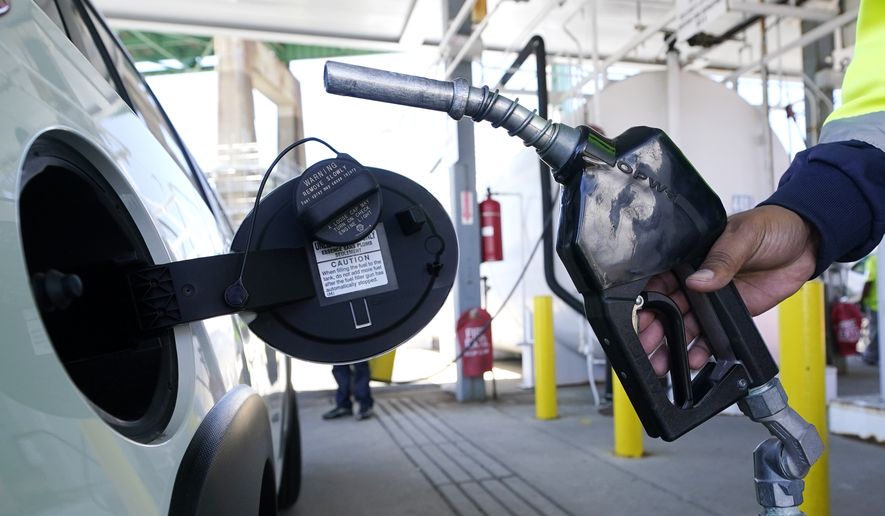What’s the opposite of a bargain? Consumers are finding out as they increasingly spend more to get less amid record-high inflation.
With rising diesel and gasoline prices increasing transportation costs (and decreasing profits), producers and retailers must raise their prices — or offer less of their goods at the same price, economists say. Think of an order of 10 chicken wings that has only eight wings. Or a quart of blueberries that measures only 1 pint.
“Sellers certainly don’t think consumers are dumb enough not to know that selling half the number of blueberries for the same price is an increase in the price of blueberries,” said economist Warren L. Coats, a former member of the International Monetary Fund. “But in a way, it helps facilitate the fact that at the higher price consumers will want to buy less.”
It’s called “shrinkflation.” And the main culprit, economists say, is the rising price of crude oil, which has been above $100 a barrel in the U.S. since late February.
The high price of oil has increased the costs of petroleum products like plastic and resin which are widely used in retail products. What’s more, record-high prices for diesel fuel and gasoline raise costs for transporting goods from the farm to the table.
John R. Hendrickson, policy director at the Tax Education Foundation of Iowa, says it’s likely the new normal.
“Americans will have less to save as more of their paychecks are going to gas and groceries,” Mr. Hendrickson said.
Take chicken, for example. Some eateries are offering it at “market price,” like lobster and crab, because the cost of white meat has fluctuated so wildly during the pandemic.
Meanwhile, Subway is limiting the amount of rotisserie chicken it includes in sandwiches. Domino’s Pizza has reduced its boneless chicken wings from 10 pieces to eight, and Burger King is selling eight-piece nuggets for the price of 10.
Heather Garlich, a senior vice president at the Food Industry Association (FIA) trade group, said wholesalers and retailers are no longer able to shield consumers from paying for increases to their costs.
“In this scenario with an extended duration of increased fuel costs, we understand that many food manufacturers are now starting to pass the increases onto their retailers, who will ultimately pass some of these pressures onto consumers,” Ms. Garlich said in an email.
According to a recent FIA report, 59% of U.S. shoppers are spending more on groceries than a year ago. It found that the average American household spends $148 per week on groceries in 2022, compared to $113.50 in 2019 before the COVID-19 pandemic.
“When the price of gas goes up, families feel the pain,” said Rea S. Hederman Jr., executive director of the Economic Research Center at the Ohio-based Buckeye Institute.
And rising energy prices have a trickle-down effect, raising costs for food delivery, vacations and rideshares.
Lyft is charging a $0.55 fuel surcharge for each ride until further notice, giving the money to drivers for their increased gas expenses. In March, Uber started charging customers a similar surcharge of either $0.45 or $0.55 for each trip and either $0.35 or $0.45 for each Uber Eats order, depending on their location. The company pledged to reassess the increase after 60 days.
On Monday, a NewsNation/Decision Desk HQ poll found that nearly half of U.S. registered voters say gas prices have led them to change their vacation plans as Memorial Day approaches. They are either staying closer to home or canceling altogether.
Economist Dan Sutter, who teaches at Troy University in Alabama, said shrinkflation hurts lower-income households the most because they spend more of their wages on food and energy.
“For lower-income households living paycheck to paycheck with little savings or few luxuries in their budgets, this becomes very stressful,” Mr. Sutter said. “Also wages often play catchup, meaning that if you get a raise to offset inflation after six months, for six months you are behind and a little poorer.”
On May 10, President Biden attributed high inflation to Russia’s war against Ukraine, corporate greed, the pandemic and the policies of “ultra-MAGA Republicans.”
“It’s not because of spending,” Mr. Biden said. “I think our policies help, not hurt.”
But Jonathan Williams, chief economist for the American Legislative Exchange Council network of conservative state legislators, said the administration’s green energy policies have kept American oil companies from producing the volume needed to keep prices low.
“President Biden’s decision to halt oil and gas leases on federal lands has led to impossibly high prices at the pump,” Mr. Williams said. “While commuters looking to fill their cars face sticker shock at the pump, those prices pale in comparison to the cost of the essential fuel responsible for powering nearly every facet of America’s agriculture industry.”
• Ramsey Touchberry contributed to this report.
• Sean Salai can be reached at ssalai@washingtontimes.com.




Please read our comment policy before commenting.